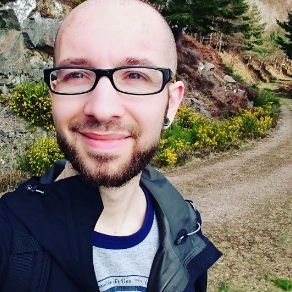Jonathan Thames- Here, there, everywhere…
My journey started in Louisville, Kentucky, but passed through three continents and six countries by the time I was 19. At that point I began a degree in Southeast Asian Studies at the University of Washington – learning Thai and attempting Chinese. Given that start to my academic career, I suppose it was only a matter of time before I ended up in the giant of Asia: The People’s Republic of China. I am thrilled to be gearing up to work with San Diego Global on this project on panda personality. But before all this happened, I spent a year in Thailand and seven years in California getting my first master’s and working in the translation industry. Hard to say I regret those years of great friends, amazing food, money in the bank, and leisurely travel. Because I don’t.
Still, I knew something was missing, and all my free time was spent volunteering at a parrot sanctuary and the local zoo. I also adopted two snakes: Akhenaten, a ball python, and Küçük, a Kenyan sand boa. Slowly I began to piece together my interest in animal personality – and connect this to my background in international policy and management. This led me to beautiful Scotland where I am currently finishing a master’s in psychology with an emphasis on animal personality and welfare. I am also a student keeper at the Edinburgh zoo on the bird section where I am lucky enough to be present at the very start of breeding season! Always an exciting time when you have the potential for new babies of endangered species like our rockhopper penguins, Bali starlings, and red-fronted macaws – to name a few.
This summer I will be working with the team in China on identifying any potential for domestication through the captive breeding program for giant pandas. Since we know that personality: (a) plays a role in captive wellbeing, (b) is a major factor in breeding success in the panda, and (c) is highly heritable, it seems clear that there is a chance for conservation breeding programs to be skewing personality distribution within a population. This is the same process by which diversity of personality (or behavior profiles) is maintained in the wild, but the pressures are different in the captive versus wild environment. Since personality research in non-humans is so new, this means the research is cutting edge – interesting for academics and highly relevant to the work of practitioners. I can’t wait to see what we find!


And we can’t wait to see what you find, either, Jonathan! You just said that personality is highly heritable – does that mean that in a captive population scientists could be unwittingly be creating a bunch of “Stepford” pandas? I know that choosing what male to mate with which female has to be more complicated than do they share a common ancestor – like Pan Pan with so many children it is hard to find a breeding pair that are not related – but do we want a whole flock of panda that are content to live in captivity when they should be chomping at the bit to get back to their wild roots – but there aren’t enough wild-born panda to keep that wildness going. I will look forward to what your findings are. I love panda and I would like to see them successfully living in the wild – not as a sporadic occurrence as it seems now! Good luck this Summer!
Sincerely, JoAnn